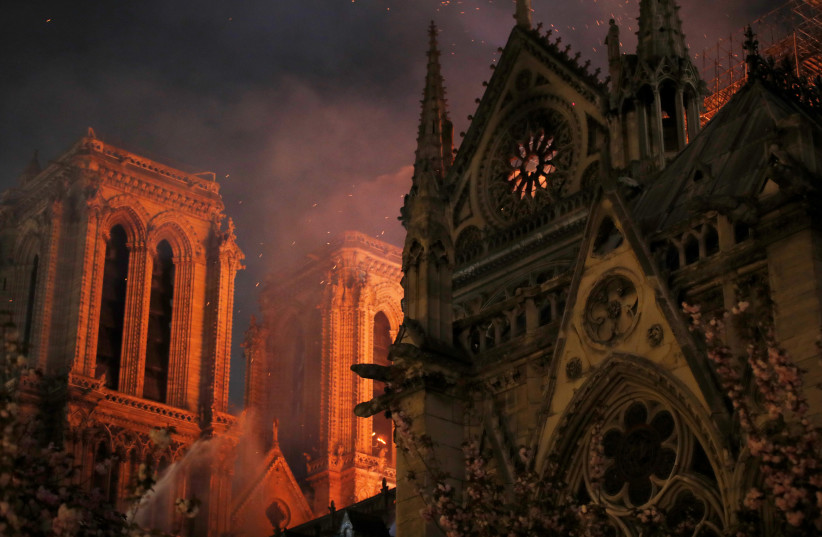French Minister of Culture Roselyne Bachelot-Narquin announced on Monday archeological finds in the famous Notre Dame cathedral, the public institution in charge of the conversation and restoration of the Paris cathedral has reported.
Located on the Ile de-la Cite, Notre Dame was heavily damaged during a fire on April 15, 2019. The spire collapsed through the roof and into the cathedral, causing serious damage to the interior of the building.
Alongside the reconstruction, an archeological excavation has been carried out by the National Institute for Preventive Archaeological research (INRAP) since February of this year. The excavation was prescribed by the Regional Archeology Service (DRAC) of Ile-de-France until March 25 to fully exploit its potential.
The excavation focused on the transept, the shorter part of the Cathedral's architectural design, which gives it the shape of a cross. The floor of the transept crossing revealed remains of remarkable scientific quality, especially regarding the brick heating lots that were exposed. Many burial sites were found under the floor, estimated to be from the 14th century.
Among the graves uncovered, a fully preserved anthropomorphic (human-shaped) sarcophagus made of lead was found. The first analysis of the furniture contained in the level of fill above it led researchers to date this burial in the 14th century at the latest. Based on its characteristics and location, the burial was probably of very dignified people.

Another important finding underneath the floor was the remains of what identified as an old rood screen. Part of the jubé that separated the sanctuary from the rest of the church's interior (the nave) and was made from stone, wood or metal. It was built somewhere around 1230 CE and destroyed at the beginning of the 18th century. Other fragments of the jubé are currently on display at the Louvre Museum.
Burial in churches is not an uncommon tradition in the Catholic world. Many churches, cathedrals and basilicas have an underground level called catacombs reserved for burial. In most cases, the people buried under important churches served an important role in their life. In Notre-Dame, most people buried were saints, bishops or cardinals serving in the cathedral at a certain point of their lives.
Bachelot-Narquin and president of the public establishment Army Gen. Jean-Louis Georgelin are delighted with these discoveries, which will enrich our understanding of the history of the cathedral.
Notre-Dame de Paris is one of the most famous cathedrals to have been built in the Gothic architecture style. It used to serve as point zero in measuring distances from Paris, and is the seat of the capital's archbishop. It is widely known as the setting of Victor Hugo's novel The Hunchback of Notre-Dame.
